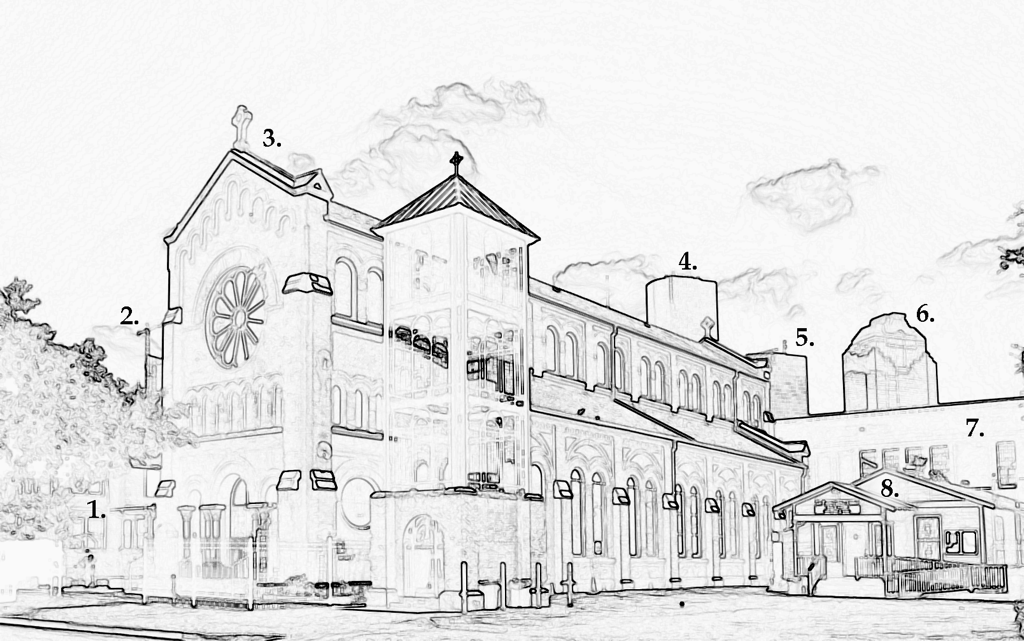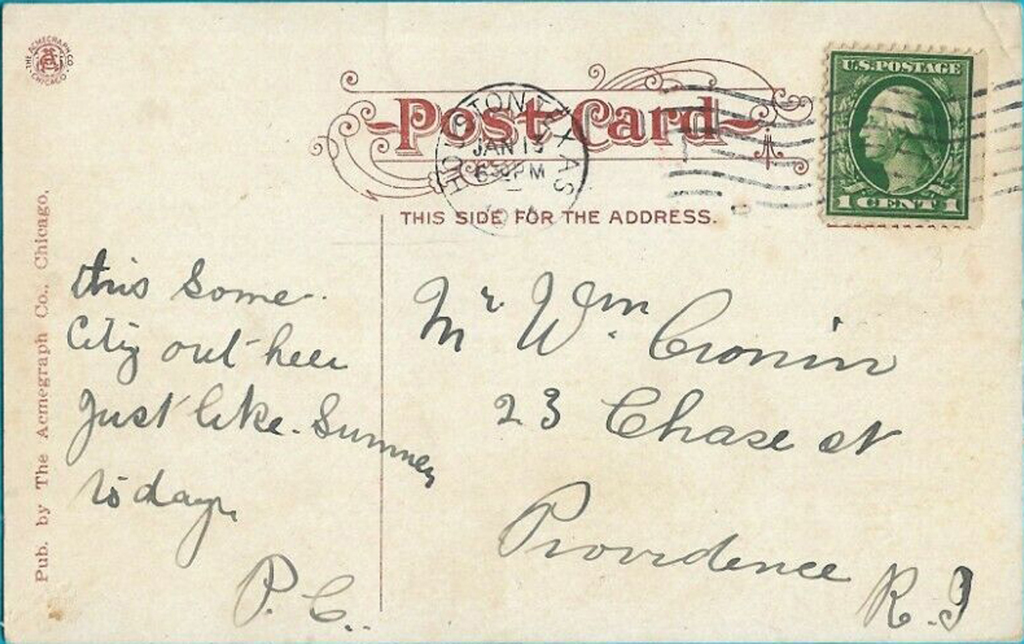St. Joseph’s Church
|
13 January 1916: 1505 Kane Street: The first St. Joseph’s Church opened in 1879 by the Sisters of the Incarnate Word and Blessed Sacrament at this site to serve Houstonians in the 6th Ward. The area north of Buffalo Bayou and south of Washington Avenue was growing fast and a neighborhood developed northwest of downtown a bit removed from the clamor of the commercial section but still close to downtown. Public transportation brought pedestrian traffic on mulecars on the Washington line, and soon rail lines covered the routes which eventually would become part of Houston’s electrified system. The 1900 storm destroyed the building and a new basilica was built in 1901 in a Romanesque Style with much fancy brickwork. The sisters also opened St. Joseph’s Infirmary, Houston’s first public hospital, on the south side of downtown in 1894.
|
16 June 2021: The church remains today an integral part of the 6th Ward community, but the infirmary has long been independent of the church. The rooftop belfry has been removed and replaced with a separate metal structure. 1. 1505 Kane: Parish House offices for St. Joseph’s Church; 2. 845 Texas: The construction crane for the Texas Tower, a 47 story building built on the site of the old Chronicle Building with adjacent Majestic Theater, and prior to 1910, the Shearn Methodist Church; 3. 1505 Kane: St. Joseph’s Catholic Church building, 1901; 4. 1000 Louisiana: Wells Fargo Plaza, 71 floors, 1983; 5. 1100 Louisiana: Enterprise Plaza, 55 floors, 1980; 6. 1111 Bagby: Heritage Plaza, 53 floors, 1987; 7. St. Joseph Offices (formerly the school building); 8. St. Joseph Church Social Ministry Building.
|
|
Postmarked: 13 January 1916; Houston, Texas
Stamp: 1c Green George Washington #405 To: Mr Wm. Cronin 23 Chase st Providence R. I. Message: this Some City out here Just like. Summer today. P. C. |
The author of the postcard was Patrick Cronin, the older brother of William Cronin, its recipient in Providence, RI. As evident from his message, Patrick was mostly illiterate, receiving only a third grade education, but he seems to also have had a true disability. In 1918 he signed his WWI draft document with a notarized “X”, omitted his birthday and listed William Joseph Cronin as his next of kin. He was then living as a patient at The Rhode Island State Hospital for Mental Disease in Providence, and was evidently never again free from state control. His trip to Houston may have been his last solo adventure. The state hospital held as many as 1350 patients, and the care was most certainly minimal.
Patrick, born in 1876, was the son of John and Alice Cronin, 1870 immigrants from Ireland. He had an older brother James born in September 1875, but by the turn of the century James has either died or set out on his own. Younger siblings were John J. (b. 1878), the recipient William J. (1884), Thomas J. (1887), and Katherine J. (1894). Their father was a common laborer, but he seems to have provided well for the family, and by 1910 the family lived in a house at 169 Bath Street a few blocks north of the center of town. John, Jr. and William worked in real estate, Thomas worked as a chauffeur as Catherine kept house, filling in for her mother who had died after 1900. The family seems to have remained in the area, Thomas married Mary C. Curran and after his father died remained in the home on Bath Street. They had their family there: John J. (1918), Mary A. (1919), Agnes Teresa (1921), James F. (1922), Francis (1924); Thomas’ brother John J. was a boarder, later in life abandoning real estate and working in Roger Williams Park south of the city. William J. Cronin stayed with the family until age 35 when he married Mary Woodworth, whose husband Albert Gasperment had died in 1918 leaving her to care for their two-year old daughter Lois Gertrude. They moved to Yalesville, CT, a small community near Meriden south of Hartford about 100 miles from Providence where they had a son, William Francis Cronin in 1927. Patrick Cronin was able to transition out of the state hospital into the Providence Municipal Lodge, a state facility for homeless men by 1940. William J. Cronin died in 1948 just two years after his wife died, who was buried in East Cemetery in Meriden, New Haven County, CT. Burial records for other members of the Cronin family have remained elusive. |


